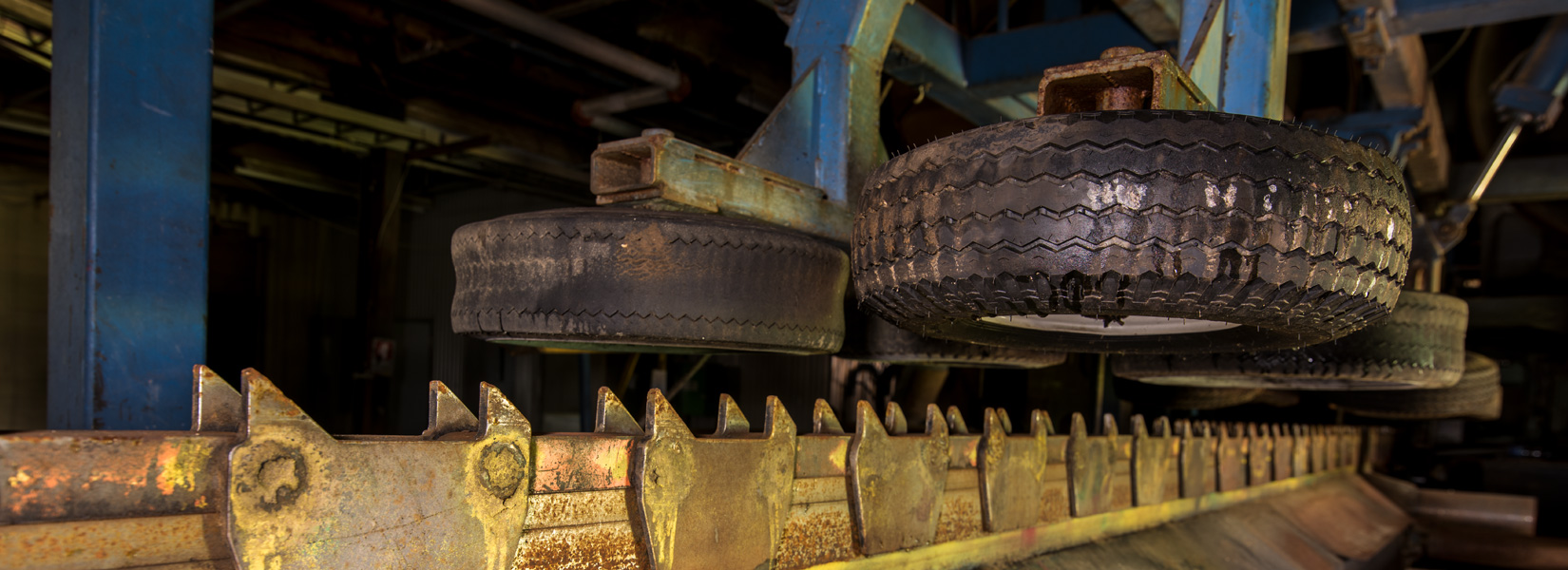Sold for $ 1 in 2004 in exchange of the promise to clean up the heavily polluted soil, the land of more than 3.5 million square feet has not found its commercial and residential purpose promised by March Group, the current owner. However, when...
The old abandoned sawmill
Ode to the industrial era of the 90s
The advantage of a 4 hours ride to visit an abandoned sawmill is that we increase our chances of finding an intact place without the slightest trace of vandalism. Or at least, very little.
All along the road, the fear of finding a barricaded building has began to gangrene our mind but the surprise was total at our arrival. The visit was possible and all the industrial equipment of this old factory were there.
It was a real ode to the industrial era of the 80s and 90s: an aluminum and concrete building like the thousand we see miles after miles near the highways. As the doors beat the measure with the wind, the swallows, which have invaded the place, enter and leave the main building at a rate that recalls the frantic pace of a anthill under attack.
For the rest, the factory is calm with the sound of our footsteps resonates on these trembling metal floors. A partial demolition seems to have stopped a while ago.
The history of the sawmill is difficult to relate. If there are articles reporting a short reopening in 2006, its final closure is difficult to establish. In spite of archeological digging here and there in order to learn a little more about these installations, very little information surfaced during my research. At most, I know that they were more than 130 employees at the peak of production in this distant mono-industrial municipality.
Inside, the most recent dates seen on the calendars date back to 2008.
For the rest, it is rather ironic to see nature regain its rights on this place by growing trees where once, these same trees were cut and transformed ...
Related content
Built in 1954, the Dickson incinerator was, at the time, the most modern one in North America. It was built to replace these old incinerators where horses were used for harvesting waste.
In the 1920s, the city of Montreal was struggling...
Heavily damaged by the time, the old copper mine is closed for several years. While its lower floors are completely flooded with muddy and stagnant water, the ground floor was, meanwhile, weakened by a sedimentary rock ceiling that collapsed in...
So you might think the old Conveyor dock's tower straight out of the fourteenth century, but you're wrong. The pier on which it is located was built in 1956-1957 and was one of the last marine works at the port of Montreal before it does change...































